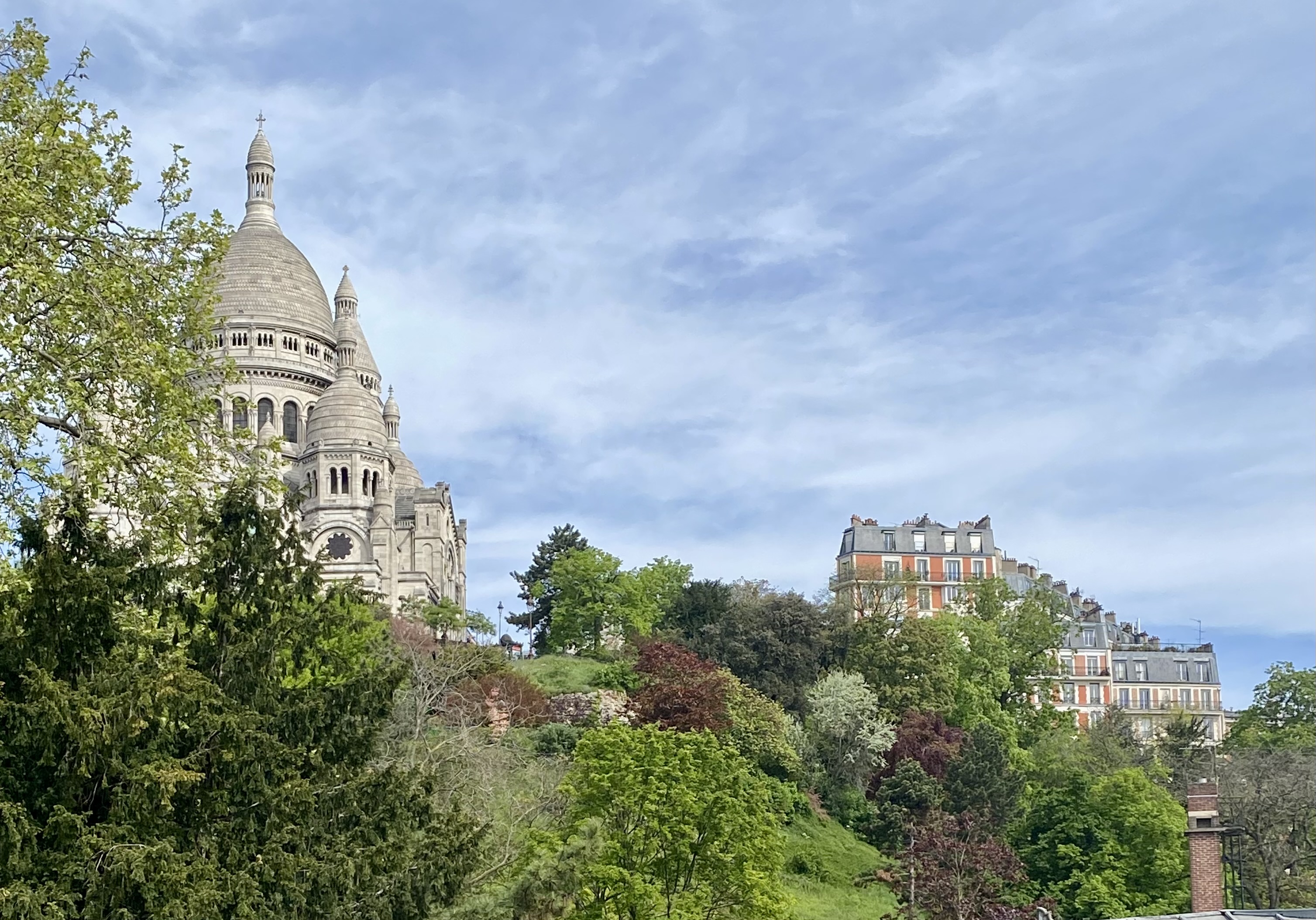Paris’s Montmartre neighborhood has boasted a bustling, bohemian atmosphere for more than a century. The village on a hill called a butte, now the 18th arrondissement (district), has always been a haven for the arts.
We at 56Paris Real Estate love it for its charm and its hidden gems, which lie away from the tourist trail. The series Emily in Paris may have popularized its touristy sites, but scratch the surface and it’s easily one of the most enchanting and intimate, sleepy and yet bustling areas of Paris, perfect for a pied-à-terre, an investment or a full-time home.
Historic Montmartre: A Neighborhood Rich in History
The butte was the site of a Christian chapel built around 270 CE to honor the first bishop of Paris and patron saint of France, Saint Denis, who was beheaded by the Romans for his faith.
Legends about the origin of the name “Montmartre” abound, but many point to Saint Denis’s execution on the hilltop as the reason: over the years, mont du martyr (“mountain of the martyr”) would become Montmartre.
Now the Sacré Coeur basilica’s gleaming white dome tops the hill, second only in height to the Eiffel Tower.
This side of the hill, which overlooks the city, is where tourists mostly hang out. It sweeps down toward the district of Pigalle, famous for the Moulin Rouge cabaret.
On the other (northern) side of the hill, the sought-after area around the Lamarck-Caulaincourt metro station, with its picturesque double staircase, is full of beautifully preserved Hausmannian buildings. Crisscrossed by staircases that lead up to the butte, it’s a quiet, residential neighborhood, peaceful and full of history. Artists (like the Art Nouveau genius Théophile Steinlen) and chic residents lived together in modest houses down little alleys or in Hausmannian treasures.
By the 15th century, the northern slopes of the hill were the site of a village surrounded by vineyards, gardens and orchards. The first mills were built on Montmartre in the 16th century, grinding grain for the city below. Of the more than one dozen windmills, only two remain, including the Moulin de la Galette, also a delightful restaurant. And there is only one vineyard, now part of the city parks.
Until it was incorporated into Paris in 1860, Montmartre sat outside the city limits—and outside its taxes, making it an attractive, affordable place for artists. It was a working-class village with its vineyards, windmills and stone and gypsum quarries.
You can still find that sleepiness beyond the buzzing heart in the quiet, largely pedestrian streets that make a warren on the hill’s top.
The Birthplace of Modern Painting
Many associate Montmartre with the Place du Tertre, the quaint village square, where artists at their easels entice tourists to have their portrait drawn. But there’s more to the neighborhood’s artistic legacy than that.
The hill has long been a magnet for artists, singers and writers. Near the end of the 19th century, Monet, Toulouse-Lautrec, Van Gogh, Valadon, Renoir and Degas lived or had studios here. At that time, composers like Erik Satie and writers, too, took advantage of Montmartre’s charm and artistic company.
Later, Dali had a studio there, and Picasso and Modigliani, among others, lived and worked in Le Bateau-Lavoir before the outbreak of World War I. The hovel of sorts, famous in art history as the residence and meeting place for some of the early 20th-century’s most outstanding artists, poets, and thinkers, was located on a lovely, leafy square. A fire destroyed most of the building in 1970 and only the façade remains. But it’s easy to make pilgrimages to sites like this and others and feel how deep the layers of history are in this neighborhood.
The Home of the Cabaret
By the 19th century, the butte was famous for its cafés and guinguettes (taverns), which offered the leisures of dancing and cabarets. Artists who performed in the cabarets of Montmartre, including Aristide Bruant, La Goulue and Jane Avril were immortalized in the lithography posters created by artists like Toulouse-Lautrec. Le Chat Noir and the Divan Japonais, cabarets founded in the 1880s, became popular haunts for writers and poets. The Moulin Rouge became the birthplace of the French cancan.
The Lapin Agile is the most famous and the only one still in operation as a cabaret. The tiny pink and green house with a rabbit painted on its facade was popular with the bohemian crowd, including Renoir, Picasso, Utrillo and Van Gogh.
A Preserved Village
Unlike the grand boulevards of central Paris, the cobblestone streets, small buildings and historic ensigns present a very different picture from the broad Haussmannian boulevards and spacious squares of central Paris.
There is a higher concentration of houses in Montmartre, some with gardens, than in most other parts of Paris. These are usually snapped up when they come onto the market. But for those looking for a peaceful retreat in the city, there is no better place.
Montmartre’s status as an officially designated historic district also ensures that it remains intact, with limited new development in order to maintain its historic character.
We at 56Paris also love the small boutiques, artisanal bakeries and cafes that add to its intimate charm by doing one thing well, whether a macaron or a madeleine: each one small and cute like the streets of Montmartre.
Looking for a peaceful pied-à-terre or investment in one of Paris’ most iconic neighborhoods?
We’re here to help you find your dream property in this neighborhood with its unmistakable je ne sais quoi. We provide objective insights into current market trends and guide you through the do’s and don’ts of purchasing property.
Contact us to learn more about the exceptional neighborhood of Montmartre, or to discuss your real estate plans in Paris.
For more stories, insights from the world of Paris real estate or just to stay in touch, follow us on Facebook, Instagram, YouTube, and Pinterest.
